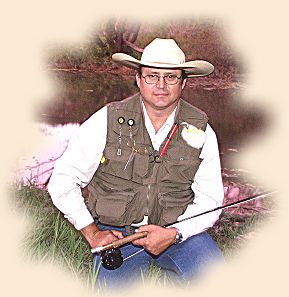
|
Thunder Spin Revival

By Johnny (aka Hillfisher), Texas
|

 Step 2 - Tie in the white super hair keeping it gathered at the bottom of the hook. Tie in at the mid-section of the hook shank and wrap forward to the eye. Wrap the thread back to the starting point.
 Step 3 - Tie in the Chartreuse super hair keeping it gathered at the top of the hook. Tie in at the mid-section of the hook shank and wrap forward to the eye. Wrap the thread back to where it's about 3/8 of an inch from the eye.
 Step 4 - Take both the top and bottom bunch of super hair and fold them back over themselves along the top and bottom of the hook shank. Take the thread that was left hanging and whip finish where it was left hanging.
 Step 5 - Over the white collar we just whip finished, wrap over this with red thread and whip finish. We started with white as it is a neutral color and has little to no affect on altering the super hair color, which is translucent. The overlay of red thread will give the appearance of gills.
 Step 6 - Trim the hair to the desired length and we are almost finished.
 Step 7 - The last thing is placing eyes on the head. There are two methods. One is to place self-sticking eyes of the desired color on either side of the head area and then cover the head area from the red gill section to just behind the hook eye with 5-minute epoxy. Add enough epoxy to give the head a nice rounded teardrop look. If you feel even more creative then instead of self-sticking eyes paint the eyes on after the epoxy head is cured. Either way, this gives the uniqueness of the Thunder Creek and the Thunder Spin.
|